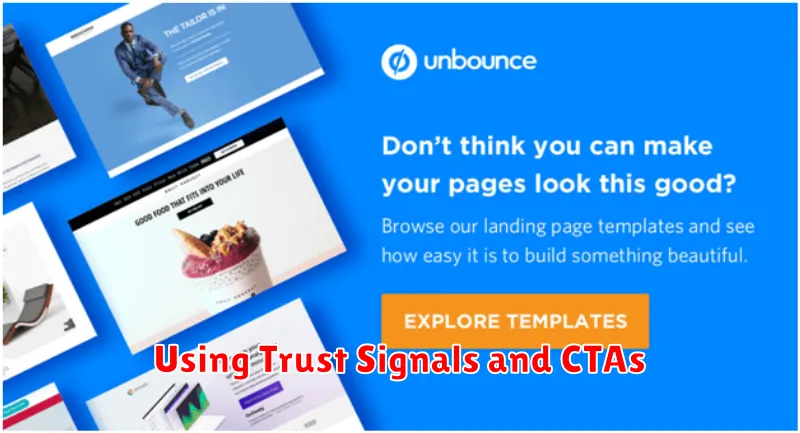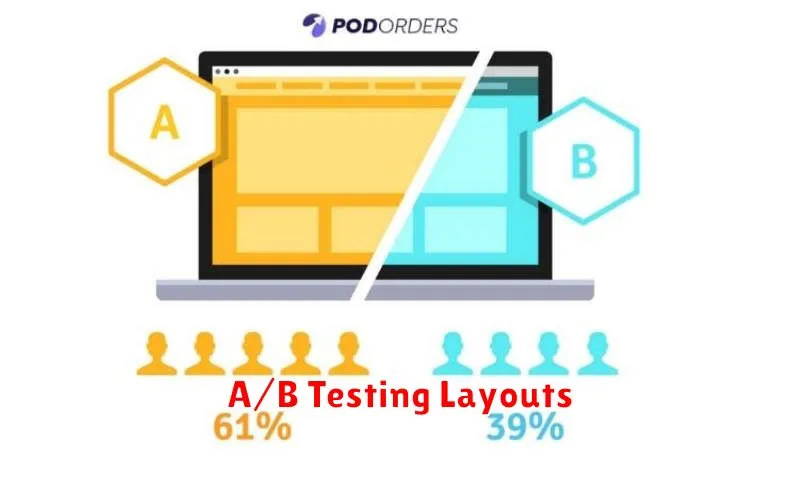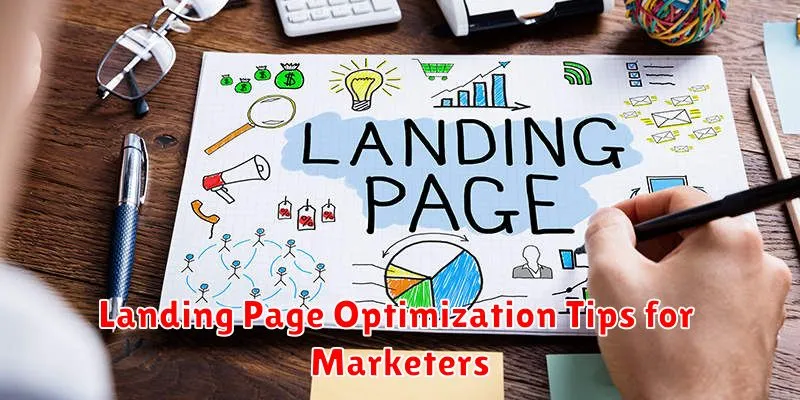In today’s digital marketing landscape, a highly effective landing page is crucial for converting website visitors into valuable leads and customers. Landing page optimization is the process of enhancing various elements of your landing page to improve its performance and ultimately increase conversions. Whether you’re focused on lead generation, e-commerce sales, or simply boosting brand awareness, implementing landing page optimization tips can significantly impact your marketing campaign’s return on investment (ROI). This article will delve into actionable landing page optimization tips for marketers seeking to maximize their conversions and drive business growth.
Effective landing page optimization requires a deep understanding of your target audience and their needs. From compelling headlines and clear calls to action (CTAs) to streamlined forms and persuasive copy, every element of your landing page contributes to its overall success. By focusing on key landing page optimization tips, you can create highly targeted and effective campaigns that resonate with your audience and drive the desired actions. This comprehensive guide will provide you with practical landing page optimization tips for marketers, enabling you to transform your landing pages into powerful conversion machines.
What Makes a Landing Page Effective?
An effective landing page is designed with a singular focus: converting visitors into leads or customers. This requires a combination of compelling content and a user-friendly design.
Clarity is paramount. Visitors should immediately understand what you’re offering and what action you want them to take. A clear headline, concise copy, and prominent call-to-action are essential.
Relevance to the source of traffic is crucial. The landing page should align with the ad, email, or search query that brought the visitor there. Inconsistency creates confusion and decreases conversion rates.
A strong value proposition is key. Clearly communicate the benefits of your offer and why it’s worth the visitor’s time and information. Highlighting unique selling points can significantly improve conversions.
Trustworthiness is essential for encouraging conversions. Include testimonials, security badges, and contact information to build credibility and alleviate visitor concerns.
Crafting Strong Headlines
Your headline is the first, and often only, impression you make on a potential customer. A compelling headline can be the difference between a click and a bounce. It should clearly and concisely communicate the value proposition of your landing page.
Focus on creating headlines that are benefit-oriented. Instead of simply stating what your product or service is, highlight how it solves a problem or improves the user’s life. For example, instead of “New Email Marketing Software,” try “Boost Your Email Open Rates by 50% with Our New Software.”
Clarity is key. Avoid jargon and technical terms that your target audience might not understand. Keep your headlines concise, ideally under 10 words, to capture attention quickly.
Testing different headlines is crucial. A/B testing allows you to compare the performance of different headlines and identify which ones resonate most effectively with your audience. Track metrics like click-through rates and conversion rates to determine the winning headline.
Using Trust Signals and CTAs

Trust signals are crucial for converting visitors into customers. They reassure potential clients that your business is legitimate and dependable. Incorporating elements like customer testimonials, security badges, and industry certifications can significantly boost visitor confidence.
Displaying prominent testimonials, preferably with headshots, can build rapport and demonstrate the value of your product or service. Security badges, such as SSL certificates or McAfee Secure, visually communicate your commitment to protecting customer data. Industry certifications or recognitions further enhance credibility and expertise.
Coupled with trust signals, clear and compelling calls-to-action (CTAs) are essential. CTAs guide visitors towards the desired action, whether it’s making a purchase, signing up for a newsletter, or requesting a demo. Use action-oriented language in your CTAs, like “Get Started Today,” “Download Now,” or “Learn More.” Ensure your CTAs are visually distinct and strategically placed on the page for maximum visibility.
Testing different CTA variations, including placement, color, and wording, can help optimize their effectiveness. Analyze data to determine which CTAs resonate best with your target audience and drive conversions.
A/B Testing Layouts

A/B testing is a crucial aspect of landing page optimization. It allows marketers to compare two different versions of a page to determine which performs better. When focusing on layout, A/B testing can reveal how changes in the arrangement of elements impact key metrics.
Testing different layouts helps identify the most effective way to present information to your target audience. Consider variations in the placement of call-to-action buttons, forms, images, and text blocks. Even subtle changes can significantly impact conversion rates.
For example, you could test a single-column layout against a two-column layout, or experiment with different positions for your primary call to action. By analyzing the results, you can make data-driven decisions about which layout maximizes conversions and improves the overall user experience.
Reducing Bounce Rates
A high bounce rate signifies that visitors are leaving your landing page without further interaction. This can negatively impact your conversion rates and overall campaign success. Addressing bounce rates is crucial for landing page optimization.
Several factors contribute to high bounce rates, including poor page load speed, irrelevant content, and a confusing user interface. Optimizing these elements is key to improvement.
Key Strategies for Reducing Bounce Rates
- Improve Page Load Speed: A slow-loading page can frustrate visitors and lead to immediate exits. Optimize images, minimize HTTP requests, and leverage browser caching.
- Ensure Message Match: Maintain consistency between your ad copy and landing page content. Visitors should find exactly what they were promised.
- Clear Call to Action: Make your call to action prominent, concise, and compelling. Visitors should understand what action you want them to take.
- Targeted Content: Tailor your content to the specific audience segment you are targeting. Address their needs and pain points directly.
- Mobile Optimization: Ensure your landing page is fully responsive and provides a seamless experience on all devices.

